When you’re knitting a sweater with a panel or all-over stitch pattern, you generally have to keep track of how many rows you’ve worked and where you are in your stitch pattern repeat. But how to do it? There are a lot of different methods for keeping track of where you are in a stitch pattern and how many rows you’ve worked, and there’s just as much variation in preference. What works best for me might not work best for you, so here are a few different methods!
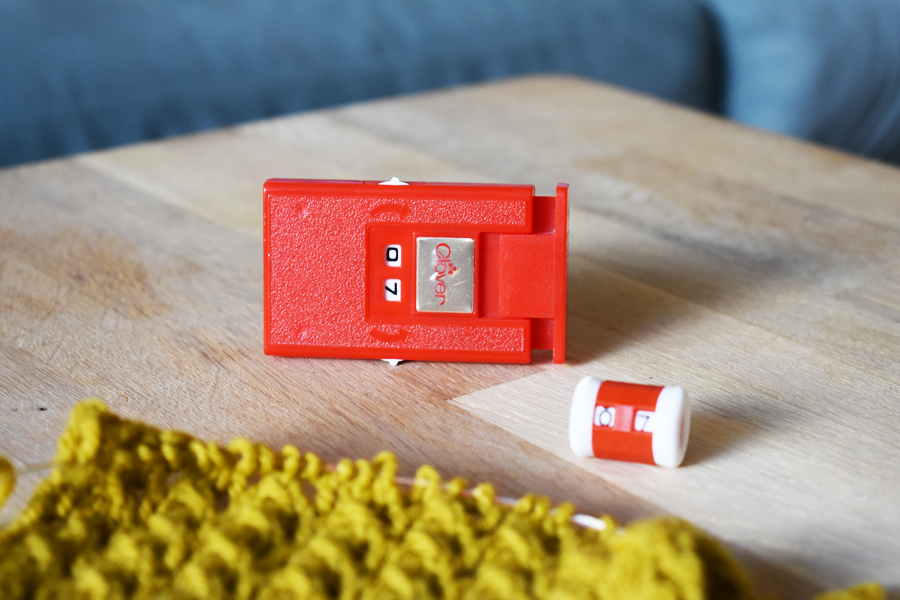
1. Mechanical Row Counters
Whether it’s a Kacha-kacha, rotary barrel, or digital counter, mechanical row counters have a button to click or a dial to twist every time you complete a row. They’re typically used to count the full number of rows in a section of a pattern, so unless you reset to zero after every repeat, you’ll need to do a little math to find what row you just worked for a repeat. Divide the total number of rows by the number of rows in the repeat. Take off the whole numbers and multiple just the decimals by the number of rows in the repeat. That will tell you the last row you just worked of the stitch pattern.
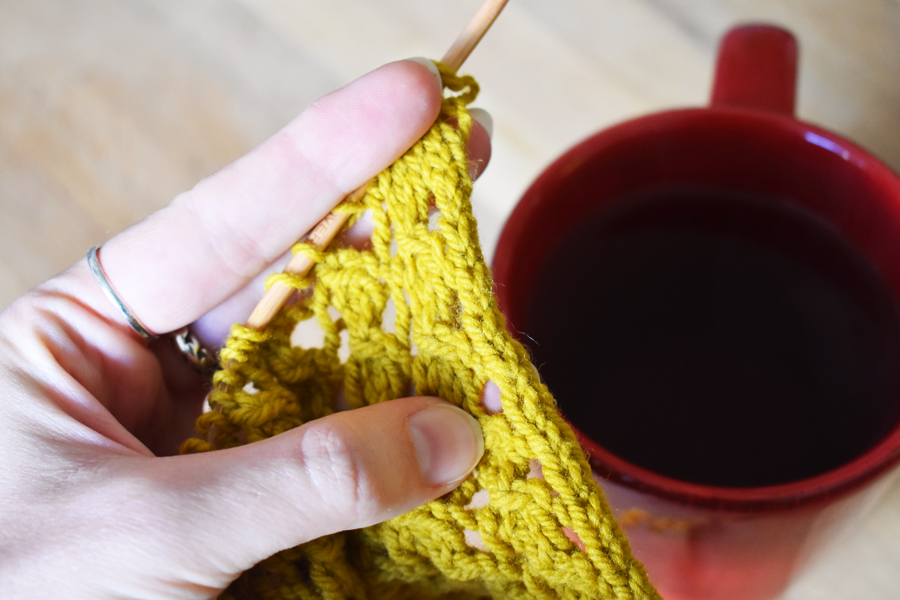
2. Actually Count Your Rows
If you don’t get lost often while you’re actively knitting and just need to know where you last left off after a break, you can simply count how many rows you’ve already worked and use the math above to find what row of the stitch pattern you’re on. Use a section of plain stockinette or your selvage stitch to count so there’s nothing to confuse or mislead you. If you’re using a different method to count but start to question your accuracy in tracking, this is a good way to double check.
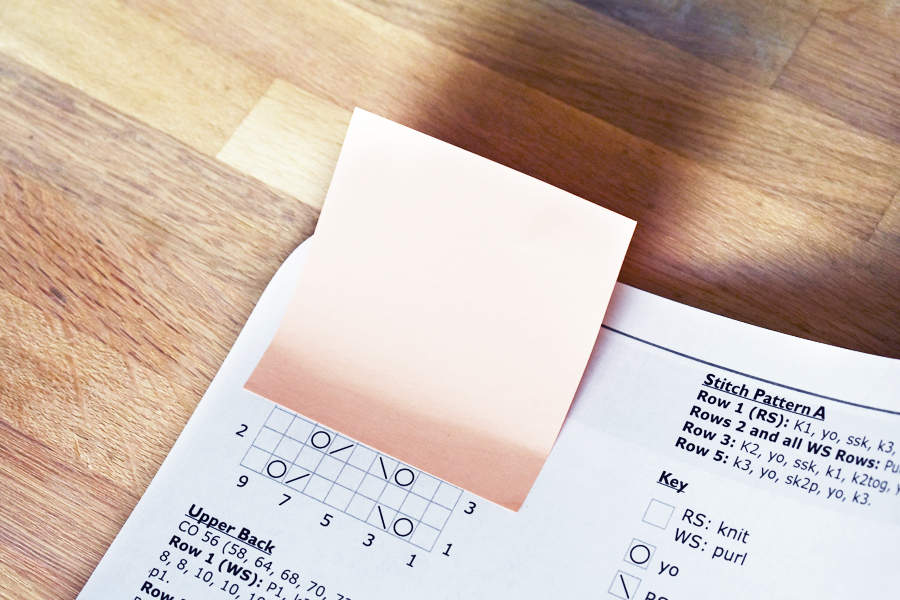
3. Chart and Sticky Note
If you’re a chart fan, one of the easiest way to keep track of where you are is to place a sticky note over the rows of your chart and move it up as you work each row. (There are also magnetic pattern holders with magnetic strips to use instead of sticky notes.) The downside to this method is that you’ll only be able to see what you’re currently working on and what you’ve already knit, so it can be harder to plan ahead.
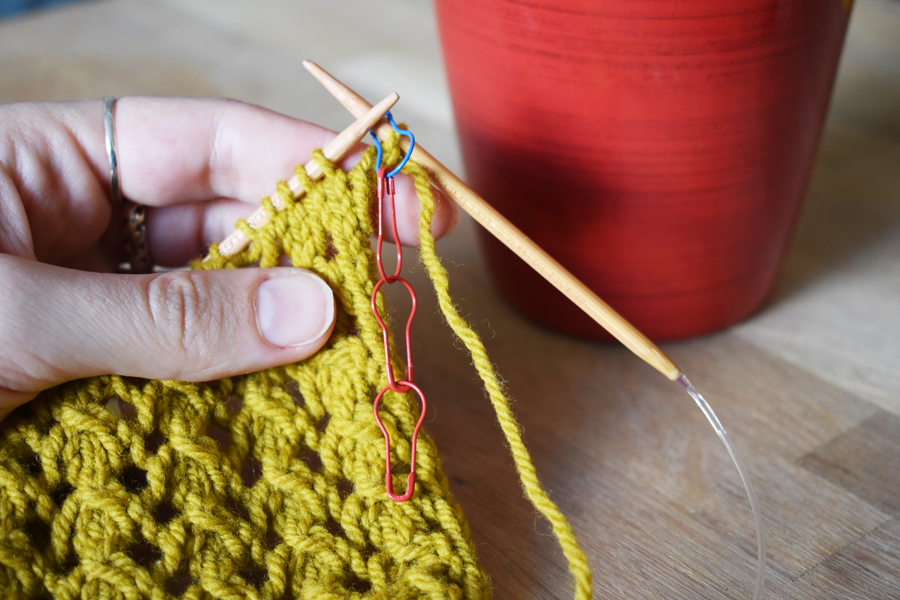
4. Counting Stitch Markers
Create a chain of locking stitch markers with one marker per row of the stitch pattern, and move down one marker every time you slip the chain. Flip the chain over to start with the first marker every time you begin a new vertical repeat. In a previous post, I provided a more detailed explanation of counting stitch markers if you’d like more information. This method is good for keeping track of where you are within a repeat without using math, but it won’t tell you the total number of rows you’ve worked.
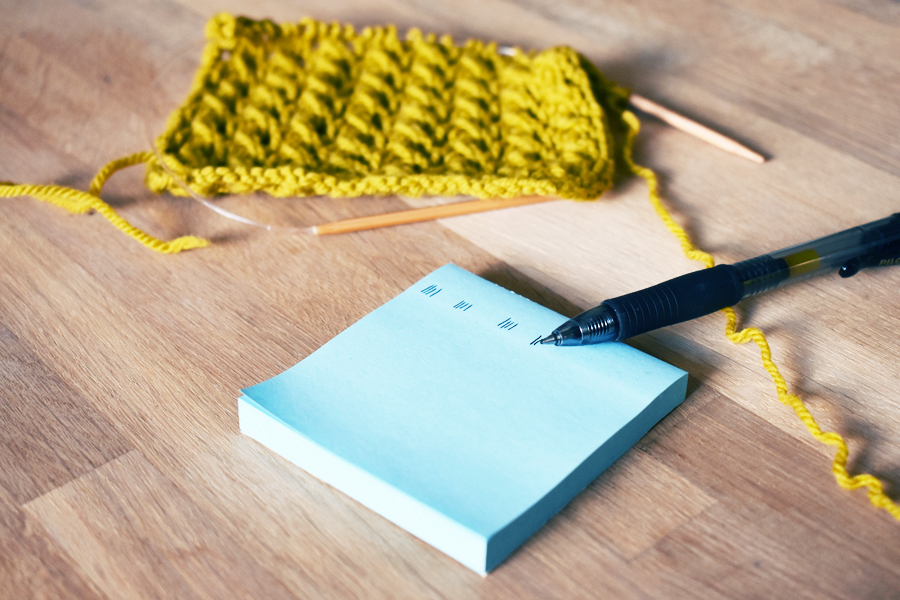
5. Pen and Paper
Draw a line every time you work a row. It’s super low-tech, and you likely already have all of the necessary tools for it at home. If you group your lines according to the number of rows in your stitch pattern repeat, you’ll be able to see both how many rows you’ve worked and which row you’re currently on at a glance. The big downside to this method is that you’ll frequently have to put down your knitting and pick up a pen, and it’s easy to procrastinate on that and lose your place.
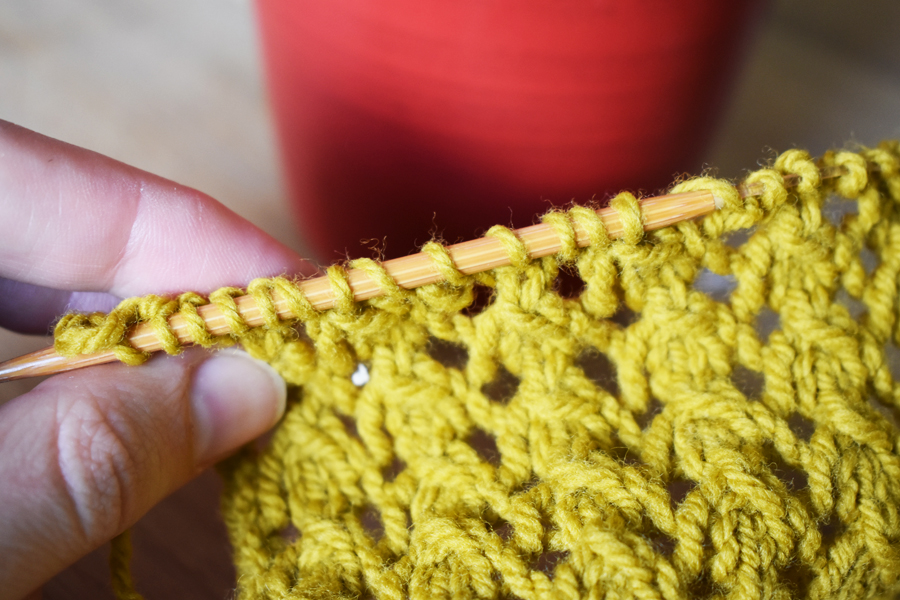
6. Read Your Knitting
Look at the stitches on your needle and the rows below and compare them to the chart. When you find a match, that’s the row you last worked. This is not an easy thing to do in general, but it’s easiest to start to learn with simple lace or eyelet patterns. Match up the closest eyelets and decreases to your needle to a row on the chart to find where you’re at. This takes practice and experience, but it’s worth working on in addition to another method until you feel confident with it.
How do you like to keep track of your rows and stitch pattern repeats? Have you tried many of these methods?

Leave a Reply